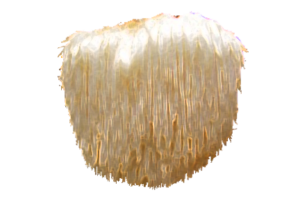Jing-Yang Wong, Mahmood Ameen Abdulla, Jegadeesh Raman, Chia-Wei Phan, Umah Rani Kuppusamy, Shahram Golbabapour, Vikineswary Sabaratnam
Abstract
Hericium erinaceus is a famous tonic in oriental medicine. The gastroprotective effects of aqueous extract of H. erinaceus against ethanol-induced ulcers in Sprague Dawley rats were investigated. The possible involvements of lipid peroxidation, superoxide dismutase, and catalase were also investigated. Acute toxicity study was performed. The effects of aqueous extract of H. erinaceus on the ulcer areas, ulcer inhibition, gastric wall mucus, gross and histological gastric lesions, antioxidant levels, and malondialdehyde (MDA) contents were evaluated in ethanol-induced ulcer in vivo. In acute toxicity study, a high dose of 5 g/kg did not manifest any toxicological signs in rats. The extract promoted ulcer protection as ascertained by a significant reduction of the ulcer area. Furthermore, it exhibited a significant protection activity against gastric mucosal injury by preventing the depletion of antioxidant enzymes. The level of MDA was also limited in rat stomach tissues when compared with the ulcer control group. Immunohistochemistry showed upregulation of HSP70 protein and downregulation of BAX protein in rats pretreated with the extract. The aqueous extract of H. erinaceus protected gastric mucosa in our in vivo model. It is speculated that the bioactive compounds present in the extract may play a major role in gastroprotective activity.
1. Introduction
Peptic ulcer, including both gastric and duodenal ulcers, has represented a major threat to the world’s population over the past two centuries. Chronic inflammation due to colonisation of Helicobacter pylori and nonsteroidal anti-inflammatory drugs account for the large majority of peptic ulcer disease. In 2007, around 14.5 million persons in the United States suffered from peptic ulcers, and this number was increased to 14.99 million in 2010. Gastric ulcer is a serious gastrointestinal disorder. It occurs when the gastric mucosa is impaired, leading to perforations of the stomach lining followed by stomach wall bleeding. Generally, ulcers result from an imbalance between increased aggressive factors, such as acid and pepsin secretions, and decreased defensive factors, such as mucus and bicarbonate secretions, mucosal barrier, mucosal blood flow, and endogenous prostaglandin production. Treatment strategies that address one or more of these factors include amelioration of pain, limitation of complications, healing promotion, and prevention of recurrence. Current treatment strategy is mainly aimed to suppress the secretion of gastric acids, which is considered as the main cause of ulcer formation.
As patients experience unpleasant side effects of the long-term use of commercially available drugs, the search for natural therapeutic agent to prevent gastric ulceration is still ongoing. Natural products from herbs, medicinal plants, spices, vegetables, and crude drug substances are considered to be potential sources to fight various diseases including gastric ulcers. Some of the medicinal plants such as turmeric (Curcuma longa), Flabellaria paniculata, Cassia sieberiana roots bark, Mucuna pruriens leaf, Phyllanthus niruri leaf, Polygonum chinense leaf, Ocimum suave leaf, ginger (Zingiber officinale Roscoe), and Hericium erinaceus fruiting body were reported to have antiulcer activity.
Many mushrooms have a long history of applications in traditional oriental therapies. Modern clinical practice in countries such as Japan, China, and Korea continues to rely on mushroom-derived preparations. Mushrooms reported to possess anti-ulcer properties include Lentinula edodes (Berk.) Pegler, Pleurotus ostreatus (Jacq.) P. Kumm , and Ganoderma lucidum (Fr.) P. Karst. H. erinaceus (Bull.:Fr.) Pers. (Aphyllophoromycetideae) is a temperate mushroom that has been domesticated and is commercially grown in Malaysia. The cultures of Hericium spp. or their extracts processed in tablets are used for curing gastric ulcer and chronic gastritis. Our previous study demonstrated that this mushroom exhibited cytoprotection activity against ethanol-induced gastric ulcers in rats. However, the mechanisms of gastric ulcer prevention and healing by H. erinaceus have not been reported. Thus, the present work aims to investigate the mechanisms of the gastroprotective effects of aqueous extract of H. erinaceus basidiocarp. The antioxidant parameters, that is, superoxide dismutase (SOD) and catalase (CAT), in the gastric tissue of rats were also studied. Further, the level of gastric mucosal malondialdehyde (MDA), which is thought to reflect free radical mediated cell membrane damage, was also accessed in the gastric tissues.
CONCLUSION:
The aqueous extract of H. erinaceus protected gastric mucosa against ethanol-induced injury. The protection was shown to be dose dependent according to the reduction of ulcer areas in the gastric wall and the reduction or inhibition of edema and leucocytes infiltration of submucosal layers, and protection was significant at the maximum dosage at 400 mg/kg. The extract also significantly increased the SOD and CAT activities and decreased the level of lipid peroxidation (as indicated by MDA level) in the gastric tissue homogenates. Immunohistochemistry analysis showed upregulation of HSP70 and downregulation of BAX protein in rats pre-treated with the mushroom extract. Further studies are required to determine the bioactive components responsible for the mechanism of antiulcer activities of H. erinaceus extracts indicated in this study.
Reference:
Evid Based Complement Alternat Med. 2013; 2013: 492976

